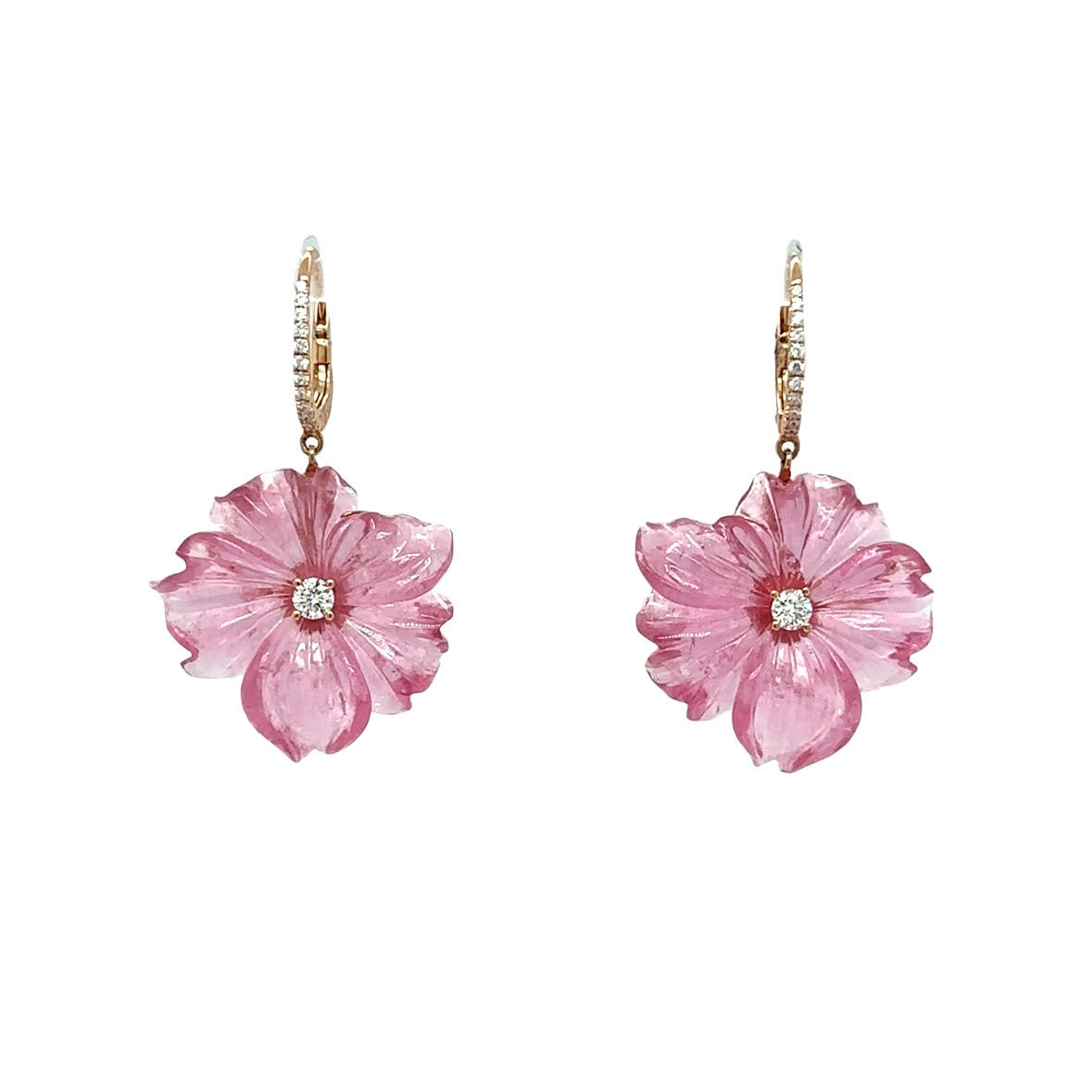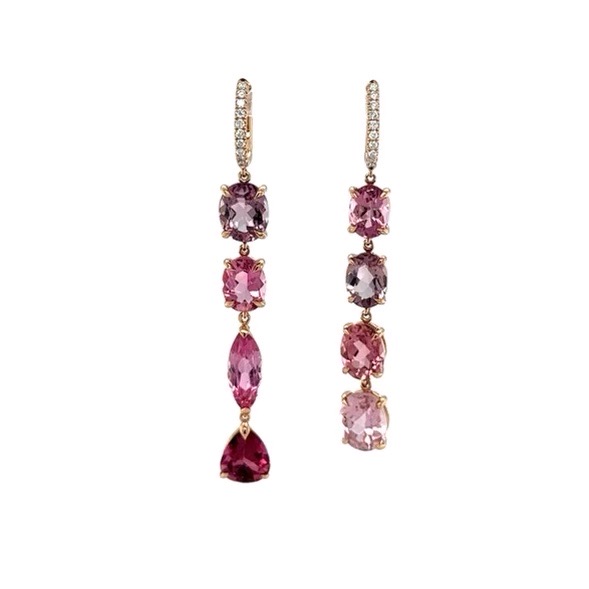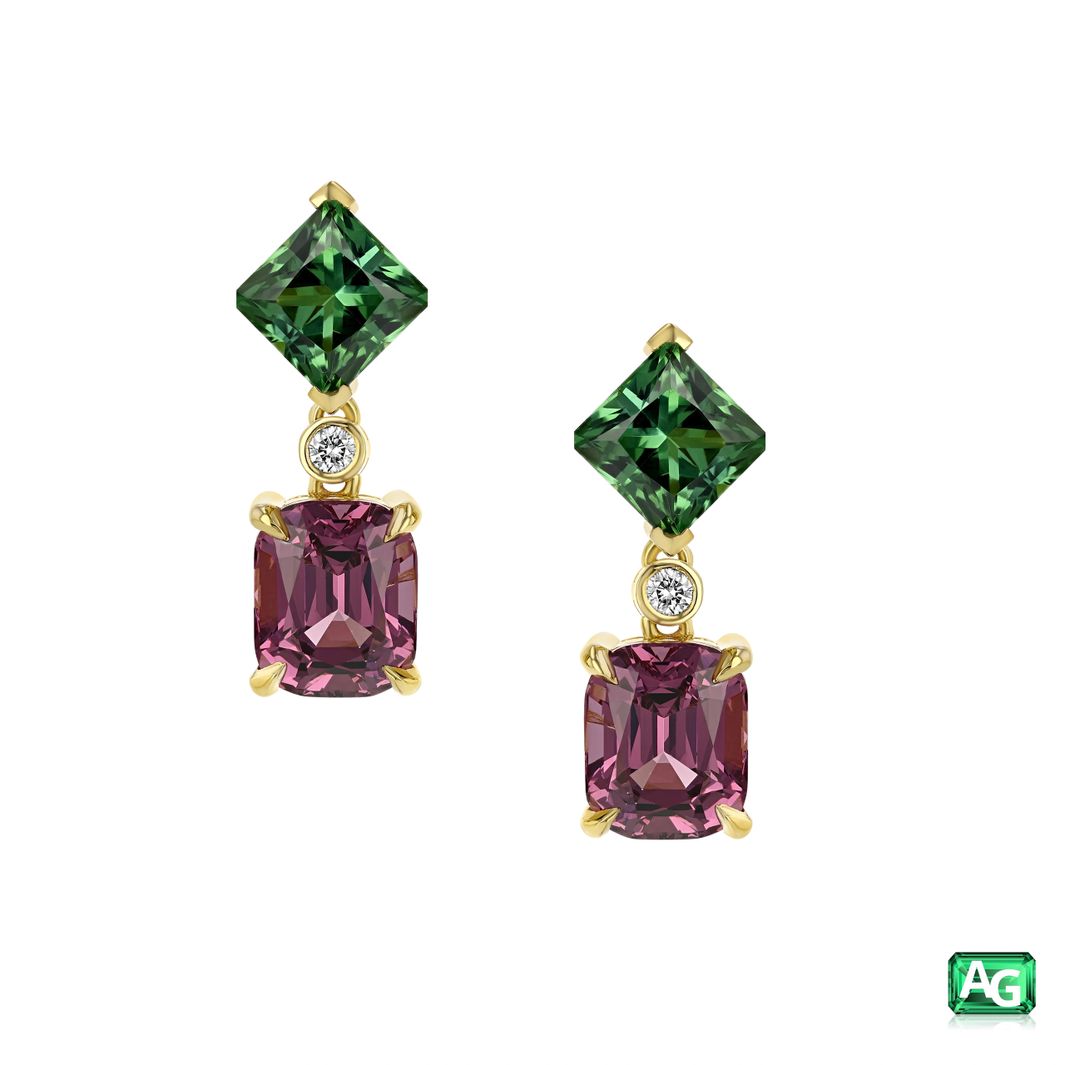
Tourmaline gemstones come in almost every color of the rainbow. Not surprisingly, this gemstone’s name is derived from the Sinhalese word “toromalli,” which means mixed gems. While it can look like many other materials, tourmaline stands on its own as one of the world’s most popular gems.
Tourmaline is one of the October birthstones.
Color
The most popular tourmaline varieties range from rich reds, pinks and peach colors, to emerald greens and yellows, to blues and violets. Black and brown tourmalines are also used in jewelry.“Parti-colored” tourmalines exhibit two or more colors in a single gem, such as watermelon and liddicoatite tourmaline. “Bicolor” tourmaline displays two distinct color zones. Paraíba tourmaline, named after the place where it was first found in Brazil, is a trade term for vividly saturated green to blue or violet copper-bearing elbaite tourmaline. Rubellite refers to pink to red elbaite tourmaline. Indicolite refers to the blue variety. Chrome tourmaline is a trade term for vibrant green tourmaline.
Cut
Tourmaline gemstones can be cut into many shapes and sizes, often as faceted gems, cabochons, polished crystal slices or mineral specimens. Cutters often fashion tourmalines as long rectangles.Origin
Brazil is one of the world’s main sources of tourmaline. Others include Afghanistan, Kenya, Madagascar, Mozambique, Namibia, Nigeria, Pakistan, Russia, Sri Lanka, Tanzania, the United States and Zambia.Durability
Tourmaline is a fairly durable gemstone with a hardness of 7.0-7.5 on the Mohs Hardness Scale.Treatments
Aquamarines are almost always heat-treated to lessen the subtle yellow color that occurs in some of them. Any treatments should be disclosed to buyers.Lab-Created
Green and blue tourmaline are frequently heat-treated. Colorless or pale gems can be irradiated. Cat’s-eyes are occasionally treated with acid, then filled. Any treatments should be disclosed to the buyer.Care & Cleaning
- To minimize scratching and wear, store each piece of fine jewelry separately in a soft cloth or padded container.
- Exposure to high heat is not recommended. Strong heat may alter color and sudden temperature changes may cause fracturing.
- Tourmaline jewelry is best cleaned with warm, sudsy water and a tightly woven microfiber or other soft cloth.
- Take all your fine jewelry to a professional jeweler at least twice a year for a thorough cleaning and inspection.
Find Tourmaline pieces at a trustworthy, JA Member Jewelry store in our Find a Jeweler directory.
Content © GIA. Image © Robert Weldon/GIA





















